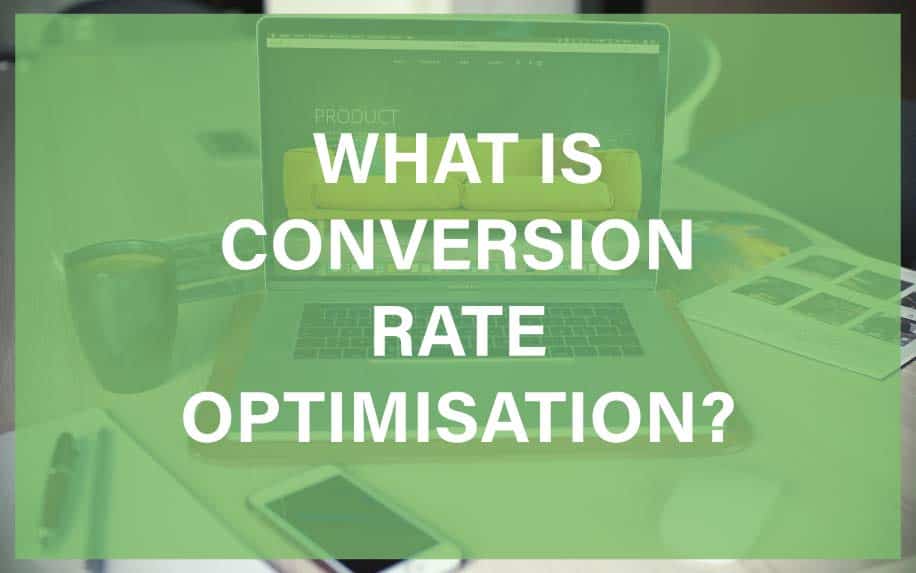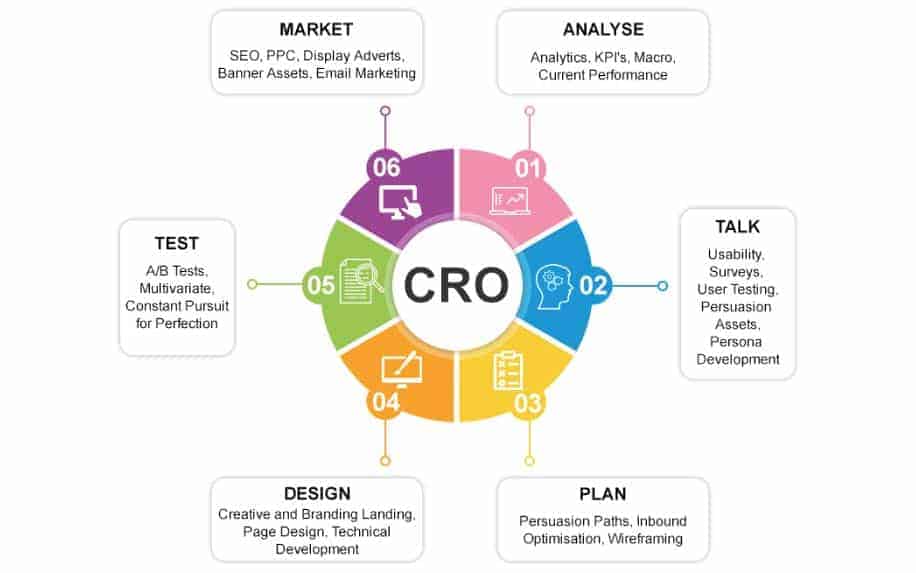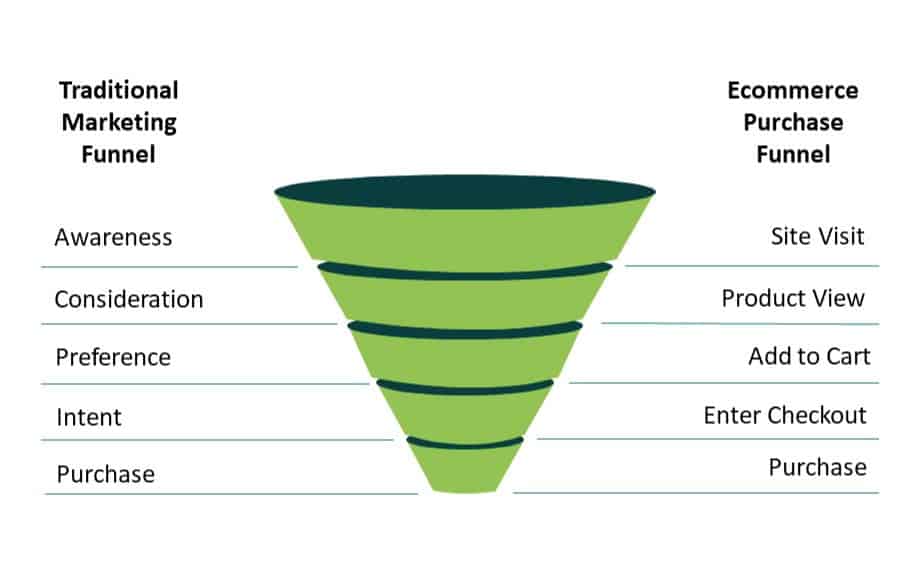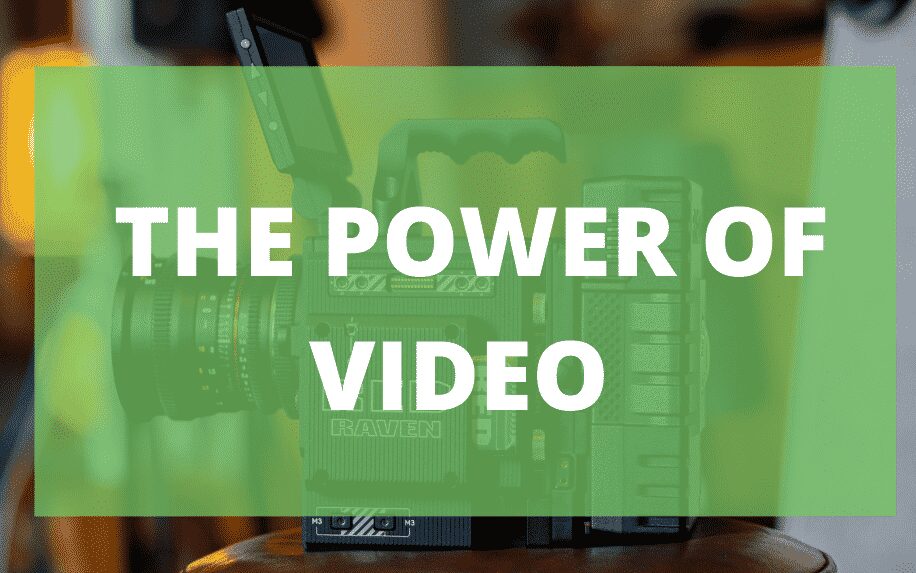As a digital marketer, your goal is to generate traffic to your business’s website and ensure that the viewer is converted into a customer. This is known as conversion rate optimisation (CRO)
This is done by tracking the actions of users on your website. To maximise user engagement, it is important to adjust your website to appeal to your main demographics. This means that they take the desired action.
This desired action is known as a “conversion”. Conversion rate optimisation is the process of designing your website to maximize the number of conversions.
In today’s competitive digital landscape, every website needs to optimize for conversions to turn visitors into customers. While the average website conversion rate languishes around 2-3%, today’s data-driven techniques make it possible to boost your site’s ability to convert traffic dramatically.
By optimizing key pages, removing friction in the customer journey, providing personalized experiences, and leveraging the latest in AI and automation, a focused conversion rate optimization strategy can increase sales and revenue exponentially.

This article will provide actionable tips and strategies to increase your website’s conversion rates, whether you are an enterprise organization or a small business. Following conversion rate optimization best practices pays huge dividends across industries and verticals.
With continual testing and improvement, your website can move from just average conversion results to convert 5, 10, or even 20% of your visitors into leads and customers. The impact of just a 1-2% increase in conversions can be stunning in terms of ROI. Ready to maximize your website’s conversions? Let’s get started.
Let’s take a look at how this works.
Table of Contents
What Is a Conversion Rate?
A conversion rate is the proportion of users on a page who take an action. The specific action can vary from one campaign to another, depending on your current goals.
For example, a conversion might be when a user:
- Clicks on a video,
- Signs up for a newsletter,
- Downloads a file,
- Enquires,
- Purchases an item.
Not every user on your site delivers value. Conversion rate monitoring lets you figure out how profitable your marketing efforts are.
The best part is that conversion rate optimisation boosts the efficiency of your marketing costs. Rather than throwing more money at the problem, CRO is about making your campaigns more cost-effective.
Ideally, you want your conversion rate to be as high as possible. Let’s take a look at how to achieve this.

Elements of Conversion Rate Optimisation
Conversion rate optimisation uses different marketing techniques to direct viewers towards your desired action.
This requires the potential customer to have a pre-existing interest in your business, which can be achieved through online marketing or at least for you to have decent traffic on your site.
After generating interest in your business, it is time to utilise conversion tactics to turn potential customers into paying customers.
Here’s how.
1. Knowing Your Target Users
Before efficiently directing your customers to your desired action, you must properly map your website and understand how the viewer reaches it. Take the time to familiarise yourself with your website’s layout and the nature of the target action.
Ideally, you should draft a step-by-step map of the required actions that the user needs to take to reach your target.
For example, if your target action is making the viewer purchase, you should go through all the necessary steps for buying a product from your website.
This will help you direct the customers to said action while also allowing you to identify any steps that might require streamlining for a better user experience.
2. Observing Analytics
Setting up website analytics for your site is essential to helping you understand how users interact with it.
These analytics will show you valuable information, such as:
- Which elements do people click on the most,
- How long do people spend on your website,
- Which pages users visit,
- And the many actions that the users take.
This will let you know which elements attract the most views to your website and what content retains viewers the most.
All of this data will go a long way towards ensuring that you have a complete understanding of your website, allowing you to improve it later on for an even better conversion rate optimisation experience.
3. Knowing Your Audience
An essential part of conversion rate optimisation is knowing the audience you are optimising for. This is usually your target audience, the many customers your business caters to. Research the market extensively to identify your target audience.
By knowing these demographics, you can better understand their wants and needs, which ultimately helps you optimise your website to satisfy those needs.
Beyond demographics, it’s crucial to understand your audience’s needs. Most important of all is the information users need to make a conversion. This allows you to tailor your content marketing efforts effectively.
4. Promotions Are Your Friend
Perhaps the hardest step in turning a viewer into a customer is to convince them to try your product. Once you are confident in how good the product or service you offer is, it is time to promote it to get potential customers to try it.
This can be done through time-limited offers, bundles or discounts.
Remember that promotions are only as effective as the number of people that know about them. A good promotion will do you no good if potential customers don’t know about them.
This is why it is important to complement them with special advertising campaigns to maximise your exposure and reach the largest number of potential customers.
Good promotions are a great way for your business to stand out against the competition. This will surely bring you more paying customers.
5. Master the Pitch
The most important thing to ensure the sale is to sell the potential customer on your product or service. This can be done by setting your website to convey your product best.
You need to convince the customer that they need your business by showing them the improvements they’ll get by buying into it. A good way of doing this is by using testimonies from previous customers who were satisfied with your services.
The more convinced the viewer is of the usefulness of your product, the more likely they are to become a converted user. Ultimately, your website should convince customers why they need your product.
Conversion Rate Optimisation in 5 Steps
Conversion rate optimisation (CRO) is the process of using online analytics and customer feedback in order to streamline your website to encourage viewers to become customers.
By optimising your digital presence, you can significantly improve your website’s conversion rate.
Here is how it’s done.
1. Understanding the Conversion Funnel
A conversion funnel is a diagram that represents the process of turning the potential viewer into a customer. The first step is making the potential customer aware of your business. This can be done through marketing efforts to generate exposure for your business.
Next, you need to generate interest in your products by adding informative content about your products to prove to customers that your product will provide them with some form of improvement.

Naturally, the interest will become a desire by the customer to own your product, which ultimately leads to the customer taking the desired action.
The exact layers of the funnel will differ from one business to the other.
However, it is generally a good idea to map out your business’s conversion funnel to help you plan out the necessary optimisations that will simplify the conversion rate optimisation process.
Generally, starting at the point where you seem to be dropping lots of potential customers is a good idea. This will likely provide the greatest change in your conversion rate, so it should be addressed first.
2. Optimising Your Website
After you have successfully mapped out your conversion funnel, it is time to ensure that all relevant aspects of your website are up to par. Here are some of the main aspects that you should consider:
- Graphics: Considering your website’s graphics is generally a good idea. The graphics should be lightweight, well-placed and clean to attract potential customers.
- Accessibility: The usability of your website plays an important role in your conversion rate. It is not enough to get the customer to want your product; they should be able to find and order it easily. By ensuring that your website is usable on all devices and your products are easily found, you not only save customers’ time but also provide them with a pleasant experience that will encourage them to keep using your business.
- Urgency: Every website needs a satisfying call to action. This motivates the viewer to engage in your “target action”. Customer satisfaction is a great driving force that will generate lots of sales for your business once you utilize it properly. Giving the potential customer a reason for taking that action is important. Your statements should induce a sense of urgency to minimize the chance of the potential customer backing out of the deal.
Additionally, you may also choose to provide the viewer with the testimonials of previous customers that were satisfied with your business as an additional motivator to reassure the viewer.
3. Measuring the Results
After you have implemented the necessary optimisations, it’s time to analyze the improved data to accurately compare your optimizations efforts.
Here are some of the available tools to help you gather data about the efficiency of your conversion rate optimisation efforts. The first tool is Google’s analytics, this will provide you with valuable statistics such as:
- Bounce Rate: The number of viewers who leave your site after only visiting one page. Generally, a high bounce rate indicates an unoptimised landing page or your marketing efforts are reaching an audience that is not interested in what you’re offering.
- Exit Rate: This is the number of viewers that leave on a specific page. This is an indicator of your least popular pages that negatively affect your site’s overall experience.
- Traffic-specific conversion goals: A great feature of the Google Analytics tools is that it allow you to set up customer conversion goals for each traffic source. This will allow you to identify your most effective marketing medium, which allows you to focus on it in future marketing campaigns.
- Custom conversion goals: One of the reasons that Google Analytics is such a popular tool is its extreme versatility. This tool will allow you to set up multiple conversion goals that are all tracked simultaneously to maximize your efficiency.
4. Set Goals
- Identify your conversion goals – is it more leads, sales, downloads etc?
- Set quantifiable targets for improvement over a set timeframe, like 25% more leads per month.
5. Analyze Site Data
- Use analytics to identify pages with high bounce rates or low conversions. Focus efforts here first.
- Identify visitor drop off points in the sales funnel using clickpath analysis.
- Analyze visitor behavior through heatmaps and session recordings.
6. Identify Friction Points
- Review site pages and flows to pinpoint friction points causing drop offs – slow load times, confusing navigation, complicated forms etc.
- Speak to customer service to identify common pain points in the sales process.
- Conduct user testing to see where users struggle.
7. Implement Changes
- Make incremental changes to pages based on the data to reduce friction and optimize user experience.
- Test changes like copy, layouts, calls-to-action using A/B testing.
- Iterate based on test results until you achieve target conversion rates.
8. Continue Optimization
- Conversion optimization is an ongoing process. Continually analyze data, test new ideas, and find ways to improve.
- Automate testing using tools like Google Optimize for continuous gains.
- Stay up-to-date on trends and leverage new technology like AI.
Following a structured optimization process is key to maximizing conversion rates. Focus on quick wins first before tackling bigger changes.
How to Maximise Your Conversion Rates
Conversion rate optimisation is not an exact science as the conversion requirements will vary from one business to another. Additionally, the factors affecting the conversion rate will vary depending on the target audience.
This is why it is important to have a solid optimisation plan where you can track each and every step taken to correctly identify the stops in the right direction.
Using tools such as google analytics will greatly help by saving you time when trying to compare the effectiveness of an optimisation change. In order to fully maximize your conversion rate, you should expect lots of trials as customers are often unpredictable.
This is why proper documentation of the process will allow you to better understand your audience and help you cater to their needs in a much more efficient way.
Once you’ve familiarized yourself with the concepts of conversion rate optimisation, you should check out our project management software guide to help you streamline your optimisation efforts.
Focus on creating high-quality, valuable content
Quality content is crucial for driving conversions on your website. According to recent research, content quality is one of the strongest predictors of conversion rate. Websites with higher quality content have conversion rates 2-3x higher on average compared to sites with mediocre content.
So what constitutes high-quality content when it comes to conversions?
- Value – The content should provide something useful and of value to your target audience. For example, blogs that provide actionable tips relevant to the reader’s needs or product pages with detailed information about features and usage.
- Uniqueness – Having fresh, original content makes it more engaging and interesting for visitors. Research shows content that is at least 20% unique converts 5X better.
- Readability – The content should be well-written and easy to scan and consume. Short sentences and paragraphs, appropriate headings, and bullet points can improve readability.
- Visuals – Relevant images, charts, videos and other visual elements can enhance engagement and comprehension. Content with visuals can improve conversions by up to 80%.
Improve website speed
Improving your website speed has clear benefits when it comes to boosting conversions:
- Faster sites engage visitors – Pages that load in under 2 seconds convert up to 2x better than slower pages. (Google research)
- Helps rankings – Page speed is a factor in Google rankings, so faster sites get better visibility in search.
- Reduces bounce rate – Slow sites see up to 5X higher bounce rates according to HubSpot. Visitors lose patience waiting for pages to load.
- Better mobile experience – At least half of traffic is mobile, and slow mobile page speeds lead many users to abandon sites before converting.
- Saves money – New Relic found that $1 invested in site speed optimization generated $2-6 in returns for ecommerce sites.
You can improve site speed by compressing images, optimizing code, using caching, upgrading hosting, and removing unnecessary plugins. Reducing page load time by just 1 second can increase conversions by 7% based on research by Akamai.
Use exit-intent popups
Exit-intent popups catch visitors who are about to leave your site and provide another opportunity to convert them by:
- Offering promotions – Exit-intent popups with special offers improve conversion rates by 2-5% typically.
- Collecting emails – Popups help grow your email list faster. Mailchimp reports exit-intent popups generate 50% more emails than other popups.
- Guiding visitors – You can direct visitors to relevant content or products they may have missed.
- Answering questions – Adding FAQs, support links, or contact forms to exit popups addresses objections and reduces exits.
In tests by WordStream, exit-intent popups increased conversions by 25-40% across various sites. The key is to create relevant, non-intrusive popups focused on providing value.
Examples of effective high-quality content:
- Tutorials that teach a specific skill related to your product/service
- Detailed product pages with images, videos, demos of the product
- Blog posts with actionable tips and expert advice for your audience
- Research-backed reports and guides related to your industry
Investing time in creating useful, engaging content tailored to your audience has a major impact on converting site visitors into leads and customers. Prioritize quality over quantity when it comes to content.
The Importance of Conversion Rate Optimization
Driving conversions is crucial for any website’s success. However, many sites are missing out on potential leads and sales due to low conversion rates. Consider these key statistics:
- The average website conversion rate is just 2-3% (OptinMonster, 2022). This means only 2-3 out of 100 visitors convert into a lead or customer.
- For ecommerce sites, the average conversion rate is around 3-4%, with top performers converting at over 5% (ConversionXL).
- Lead generation sites have conversion rates between 2-12%, with finance and SaaS companies on the higher end (Unbounce).
- Conversion rates vary significantly by industry. For example, insurance and travel sites convert at <2%, while recruitment sites convert at 12%+ (WordStream).
- Mobile conversion rates trail desktop rates by up to 50% in some industries (Monetate).
Clearly, there is huge room for improvement for most websites when it comes to optimizing conversions. Just a 1% increase in conversion can translate to up to 100% increase in leads or revenue in many cases.
Trends to note for 2023:
- Continued growth in mobile, estimated to account for over 70% of traffic for many websites. Optimizing for mobile will be key.
- More personalized customer experiences and journeys driving higher conversions. Segmentation and customization will be crucial.
- The use of AI and data to optimize websites in real-time based on visitor behavior and preferences. This dynamic optimization can lift conversions significantly.
With benchmarks of 2-5% conversion rates, most websites should strive for at least a 25-100% improvement in their conversion rate through focused optimization efforts. This article provides key ways to optimize based on proven strategies and the latest trends. Improving conversion rates takes continual testing and optimization but can yield huge dividends.
Frequently Asked Questions
Here are some common questions readers may have about increasing website conversion rates:
Q: What is a good conversion rate benchmark for my industry?
A: Conversion rate benchmarks vary widely by industry. For SaaS it’s 2-5%, ecommerce 3-5%, lead gen sites 2-12%, etc. Do research to find credible benchmarks for your specific industry.
Q: How long does it take to see results from conversion rate optimization?
A: You should see initial results in 1-2 months. However, conversion optimization is an ongoing process. Continually test and iterate to steadily improve over time.
Q: Should I focus on desktop or mobile conversion optimization?
A: Optimize for both simultaneously. Mobile usage continues to grow, so ensure your site is fully responsive and mobile friendly. Test on all devices.
Q: What tools do I need for conversion optimization?
A: Heatmapping, A/B testing, analytics, landing page builders, and user testing tools are very helpful. Many are available cost effectively or even for free.
Q: How much can conversion optimization increase my revenues?
A: A 1% lift in conversion can translate to 10-100% revenue gains for many businesses. The more you optimize, the greater the revenue impact.
Q: Where should I start with conversion optimization?
A: Focus first on pages with high traffic and low conversion rates. Quick wins like page speed improvements and removing friction can boost conversions quickly.
Conclusion
Optimizing your website’s conversion rates takes work, but pays off exponentially. By implementing these research-backed tips, you can tap into huge gains from each visitor that arrives at your site. Approach conversion rate optimization as an ongoing process, not a one-time effort.
Continually experiment with your website to identify friction points and test new enhancements. Track conversion rates meticulously to measure the impact of changes. Iteratively improve page by page until you have a high-performance website that converts visitors at the highest possible rates.
With the latest tools now available and insights into customer psychology and behavior, conversion excellence is achievable for organizations of all sizes and industries. Find a conversion rate optimization approach that works for your business, stay persistent, and over time you will transform your website into a lead and revenue-generating powerhouse.


